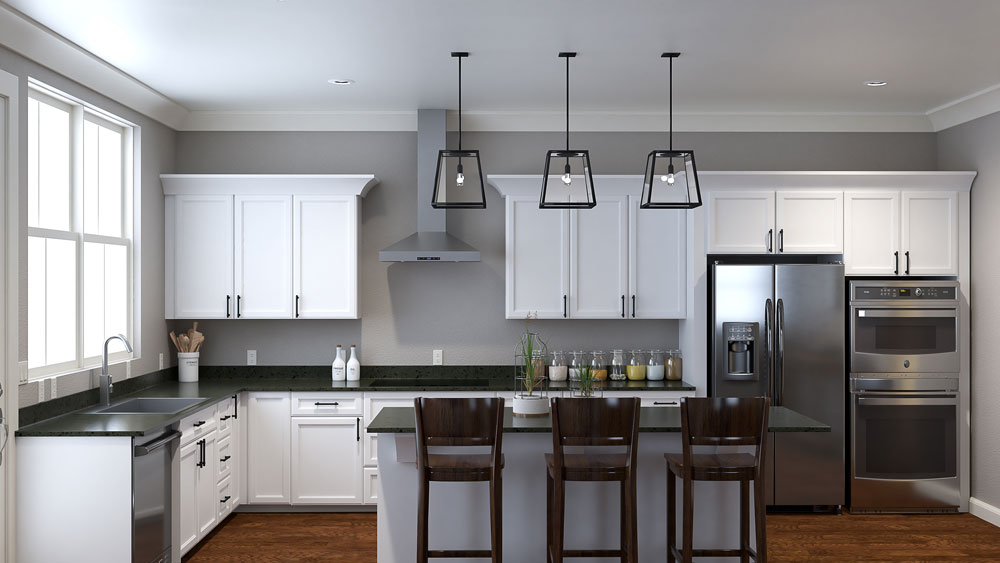Are you surprised by new home construction trends in your own city?

Having been in the industry for nearly 30 years, it is not often that I am surprised by trends in new home construction. The goal is to sell to anyone who financially qualifies. But, I had to laugh when I saw the email announcing the New American Home that is being built for the 2026 NAHB International Builders Show. It has basement space for up to 17 cars! I’ve known a number of people over the years with impressive car collections, but how wide is the audience that has more than a dozen?
In these times of elevated interest rates and sky high home prices there is much buzz about affordability, which theoretically implies to smaller homes. So, I am shocked to see the newest homes being constructed in my “affordable” neighborhood are 50%+ larger and significantly more expensive than my home that was built in the fall of 2022. The families shopping for homes right now are, apparently, looking for space, and they have the means to afford a bigger house. I guess that makes sense. Although there are genuine efforts by cities and builders to create affordable housing, the median price of $409,000 nationally per Zillow (down from $430K last year), doesn’t offer many options for typical first-time homebuyers, or families looking to move up a rung. This “affordability” paradox hammers home the importance of knowing your core audience, building for them, and marketing to them appropriately.
There are many builders who do this well and adapt to the changing environment. One example is Arizona based Meritage Homes whose mission today is, “To design and build homes that are innovative, built with care and superior craftsmanship, which deliver enduring value.” Contrast that with their mission a few years back, “To build move-in-ready affordable homes for entry-level and first move-up buyers,” and you can see the evolution to better reflect the current new home market.
Another builder to successfully navigate trends is Scottsdale-based luxury builder Camelot Homes who have retooled home designs and marketing from an elegant old world look and feel to a vibe that is much more contemporary to attract younger yet still well-heeled homebuyers.
How can you be sure you are targeting the right audience? Begin with a review of your overall marketing strategy. Do your website, sales offices, and print marketing appeal to the potential buyers you are attempting to attract? Although first-time and luxury home buyers are both seeking out their dream homes, the marketing for these two distinct groups looks very different. This is where consultation with marketing experts like Blue Tangerine, Denim Marketing, Group Two, Bokka Group, and Meredith Communications, to name a few, can be highly beneficial.
Next, review your digital marketing tools, and upgrade them if necessary. If you are still using static floorplans and stick renderings, think again. Interactive floor plans, 3D renderings, virtual tours, animations, and visualizers all play an integral role in engaging homebuyers and selling homes.
Interactive Floor Plans (IFPs) have universal appeal, and every builder website should feature them. Buyers of all demographics love to select structural options and customize their living spaces with the interactive furniture planner.
Quality 3D renderings are essential for all builders as well. Black and white stick drawings are never a good option, even for the simplest of homes. Standard 3D (Outhouse Bronze and Silver) renderings are perfectly acceptable for most homes, especially those at lower price points. For move-up and luxury homes, you may want to consider 3D photoreal renderings (Outhouse Gold). Luxury and custom builders may want to opt for Platinum renderings that can be further customized.
Should your budget for digital marketing tools be a bit larger, investing in animations and virtual tours pays off in two significant ways. First, they enable homebuyers to digitally explore your homes from anywhere. Second, both are available at a fraction of the cost of constructing a model home. Your target buyer should be the top consideration when choosing which format to offer. Younger buyers prefer user-controlled virtual tours. Buyers over 50 often gravitate towards video format animations.
Another online tool appealing to home buyers at all price points is the Visualizer. With both interior and exterior versions available, buyers can mix and match colors and finishes to achieve the desired look and feel. The visualization process is so much easier than making selections for an entire house based on one-inch paint chips and tiny floor, counter, and cabinet samples. It also removes some of the pressure and stress from the design center visit.
Here are a couple more ideas to help you connect with your appropriate audience:
Elevate your brand with distinguished print marketing. Consider the hotel industry when investing in print—the swankier the property, the more excellent the print collateral. The manager of the high-end hotel presents you with a “folio” at checkout in lieu of a bill. Although print appeals greatly to buyers in the luxury home market, even younger homebuyers like to walk away from the sales center with a brochure featuring their preferred floor plan and elevations, at a minimum. In today’s digital world, consumers still appreciate a tangible marketing piece when making one of their biggest life purchases. Why not present them with something sophisticated or fun, and memorable?

Today, the most progressive builders are transforming their websites with artificial intelligence (AI) to better understand and target their audience. Like that provided by openhouse.ai, AI offers home buyers a personalized shopping experience and predicts where your unique market is going with more accuracy.
So take some time during this evolving housing market to understand your homebuyer and determine if your current marketing strategy is meeting their needs. If not, consider working with online marketing experts to determine which digital and on-site tools will move the needle most with your target audience to increase your new home sales.











